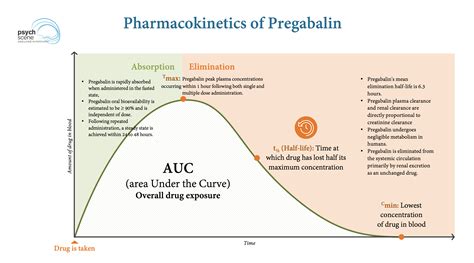Intro
Discover key facts about Pregabalin 75mg, including its uses, benefits, and potential side effects, as a treatment for epilepsy, anxiety, and nerve pain management, with insights into dosage and prescription guidelines.
Pregabalin, marketed under the brand name Lyrica among others, is a medication used to treat epilepsy, neuropathic pain, fibromyalgia, and restless leg syndrome. The 75mg dosage is one of the common strengths of this medication, and understanding its usage, benefits, and potential side effects is crucial for patients. Here's an in-depth look at five key facts about Pregabalin 75mg, aiming to provide a comprehensive overview for those considering or already using this medication.
Pregabalin works by binding to the alpha2-delta subunit of voltage-gated calcium channels in the central nervous system, which reduces the release of several neurotransmitters, including glutamate, norepinephrine, and substance P. This action is believed to account for its therapeutic effects, particularly in reducing pain and seizure activity. The mechanism of action is somewhat similar to that of gabapentin, another medication used for similar conditions, but pregabalin has a more predictable pharmacokinetic profile, which can lead to more consistent effects.
The dosage of pregabalin can vary significantly depending on the condition being treated. For epilepsy, the typical starting dose is 75mg twice a day or 50mg three times a day, which can be gradually increased to a maximum dose of 600mg per day. For neuropathic pain, the starting dose is often 75mg to 150mg per day, divided into two or three doses, and can be adjusted based on efficacy and tolerability up to a maximum of 300mg to 600mg per day. It's essential for patients to follow the dosage instructions provided by their healthcare provider, as the optimal dose can vary significantly from one individual to another.
Benefits of Pregabalin 75mg

Working Mechanism
Pregabalin's working mechanism involves its ability to reduce the abnormal electrical activity in the brain that causes seizures and pain. By binding to specific receptors, it decreases the release of excitatory neurotransmitters, thus calming down the overactive nerve signals. This action not only helps in controlling seizures but also in reducing the perception of pain, making it an effective treatment for various neuropathic pain conditions.Potential Side Effects

Steps for Taking Pregabalin 75mg
To ensure the safe and effective use of pregabalin 75mg, patients should follow these steps: - Take the medication exactly as prescribed by the healthcare provider. - Do not stop taking pregabalin without consulting the healthcare provider, as stopping the medication abruptly can lead to withdrawal symptoms. - Inform the healthcare provider about all the medications being taken, including prescription, non-prescription, and herbal products, to avoid potential drug interactions. - Attend all scheduled follow-up appointments to monitor the effectiveness of the treatment and potential side effects.Practical Examples and Statistical Data

Benefits Over Other Treatments
Pregabalin offers several benefits over other treatments for neuropathic pain and epilepsy. Its pharmacokinetic profile allows for more predictable and consistent drug levels, which can lead to better efficacy and fewer side effects compared to some other medications. Additionally, pregabalin has a relatively fast onset of action, with some patients experiencing relief from pain or reduction in seizure frequency within the first week of treatment. This rapid response can be particularly beneficial for patients who have not found relief with other treatments.Conclusion and Future Directions

Final Thoughts
For patients considering pregabalin 75mg, it is essential to have an open and honest discussion with their healthcare provider about the potential benefits and risks. By understanding how pregabalin works, its potential side effects, and how to take it safely, patients can make informed decisions about their treatment. Moreover, ongoing research and clinical trials will continue to refine our understanding of pregabalin's role in managing various neurological and pain disorders, potentially leading to new treatment guidelines and improved patient outcomes.What is the primary use of pregabalin 75mg?
+Pregabalin 75mg is primarily used to treat epilepsy, neuropathic pain, fibromyalgia, and restless leg syndrome.
How does pregabalin work?
+Pregabalin works by binding to the alpha2-delta subunit of voltage-gated calcium channels in the central nervous system, reducing the release of several neurotransmitters.
What are the common side effects of pregabalin 75mg?
+Common side effects include dizziness, drowsiness, difficulty with concentration or attention, weight gain, dry mouth, and swollen hands and feet.
Can pregabalin be used for conditions other than those approved?
+While pregabalin is approved for specific conditions, research and clinical trials are ongoing to explore its potential use in other conditions, but patients should only use it under the guidance of a healthcare provider for approved indications.
How should pregabalin 75mg be taken?
+Pregabalin 75mg should be taken exactly as prescribed by the healthcare provider, without stopping the medication abruptly, and with regular follow-up appointments to monitor its effects and side effects.
We invite readers to share their experiences or ask questions about pregabalin 75mg in the comments below. This engagement can help foster a community of support and information exchange among patients and healthcare professionals, ultimately leading to better outcomes for those treated with pregabalin. Whether you're a patient, a caregiver, or simply interested in learning more about this medication, your input is valuable and can contribute to a more comprehensive understanding of pregabalin's role in managing various health conditions.
